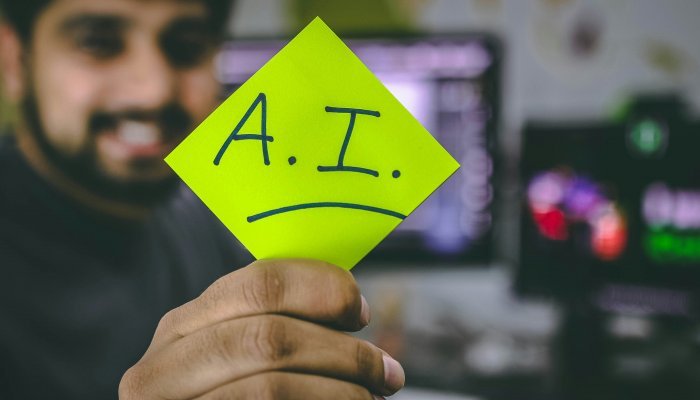Highly skilled professionals in sectors like finance, technical services, insurance, and real estate are finding artificial intelligence (AI) creeping into their day-to-day working lives. AI exposure is not just automating less skilled jobs but impacting workers across all tiers and all industries, according to a new report by the Pew Research Centre. In fact, with the arrival of generative AI tools such as ChatGPT-4, Bard, Copilot and AlphaCode, degreed individuals are more likely to be affected by new technologies.
Managers may not be in the immediate firing line, due to their range of responsibilities and human focus, but is it just a matter of time before a machine does your annual assessment?
To counter this possibility, reams have been written in recent years about how managers need to enhance human-centric skills, to develop their creativity, empathetic muscles and emotional intelligence. Companies and business schools are focusing strongly on human capabilities such as problem-solving, collaboration, analytical thinking, self-awareness, curiosity, and the development of trust, all of which are seen as vital ingredients for getting the most out of employees.
While this may seem like a positive step forward for the management profession, it is also a significant shift away from the “command-and-control approach of the last 50 years”, says Johan Steyn, a human-centred AI thought leader and commentator.
“This know-your-place-and-do-your-job approach is the stuff that most business schools have been teaching for decades, and within the corporates we grew up in there was no alternative. But now command-and-control-type managers, who micromanage people rather than leading them, could see some of their functions being fulfilled by predictive analytics and large language models (LLMs) such as Google’s Bard and OpenAI’s ChatGPT,” says Steyn.
This does not mean, however, that machines are ready to take over a role as multifaceted as managing. While the exponential growth of these technologies is impressive, Steyn stresses that AI itself is a fundamentally neutral tool and still “extremely limited compared to human intelligence”. Current iterations of AI algorithms cannot yet understand context or show emotional or social intelligence or empathy, so there are still things that humans can do that machines and AI cannot, he says.
Is management losing its lustre?
While the jury is out on whether AI would be a good boss, on par with a bad human boss, or a veritable technological taskmaster, its advancement into the workplace could be accelerated by the significant trust deficit between employees and their human managers, coupled by the reluctance of younger professionals to take on the stresses of leading in a burnout-filled, post-Covid world.
Recent insights into the younger generations in the workplace, the 40-to-20-something Millennials and Gen Zs, point to a cohort that is increasingly hesitant to take on demanding leadership roles that don’t offer tangible financial or professional advantages. The 2022 Gen Z and Millennial Survey by Deloitte tells us that while 39% of Millennials choose to stay with their current company because of work-life balance advantages, only 24% remained to grow their career or take on a leadership role.
With some young professionals not seeing management as an attractive career stepping stone, and with AI technologies poised to take some of the drudgery out of managing, there are clear indications that the manager role itself is in the throes of a notable change. This is not necessarily a bad thing, says Steyn, who asks whether AI might even be able to reinvigorate the management profession by asking some searching questions about how we manage and who gets a seat at the table. This could be bad news for shoddy leaders, but good news for employees and businesses.
Can AI inject humanity back into management?
For Steyn, the current AI debate is less about the technology and more about how the human aspect of day-to-day working has been eroded in many organisations and through the operationalisation of management. “One of the key things people want from their managers or leaders is a safe place, not an easy place. After all, there’s always a time and a place to pull up an employee for not doing their job – but they still need to feel safe,” says Steyn.
The pressure on junior and middle managers, who are sandwiched between the expectations of the C-suite and the needs of fellow colleagues, means that these opportunities for human engagements and building trust are often in short supply. This is where an automation strategy could both optimise management and inject humanity back into this role.
“I think a good leader would want to spend more quality time mentoring and helping, but these managers might only have 10% of their time current to do that,” says Steyn. “The value of technological automation is to take those things that are high value, let the AI chatbots do that, and spend more time leading, not managing.”
While Steyn questions whether AI can currently handle the end-to-end management process better than a human being, he certainly sees potential to use the technology to select better managers and weed out bad bosses. “Imagine we can use AI to pick up levels of potential narcissism in our recruitment process of managers,” he asks. “If you can pick up levels of danger, or behaviours that are worrying – like potential harassment – how would that change workplaces?”
A carbon-silicon tomorrow
Many of these imagined scenarios are hinged on the development of AI from a narrow intelligence to a more well-rounded general intelligence and then into a superintelligence. Whether future AIs will fully replicate the self-awareness of a human being is unknown, but for Steyn the focus currently should be on harnessing automation to help managers and leaders streamline routine, time-intensive tasks, from conducting an initial performance management review to filtering down 200 CVs.
The conversation changes, of course, when AI becomes sentient enough to become a business leader in its own right.
“What kind of leader will it be?” asks Steyn. “I don’t have an opinion yet, but I’m leaning towards an Orwellian future. It’s a huge concern to me that while we have processes to onboard a human, I don’t know any HR team that knows how to onboard a non-human intelligence chatbot, a digital twin or a digital assistance. Right now, we might have 10 people in a team and one is a non-human intelligence, but what happens when we get to a point where two of us are human and the eight are non-human intelligent agents? How do you manage a team comprising carbon and silicon?”
Citing the likes of Oxford academic Nick Bostrom (author of Superintelligence: Paths, Dangers, Strategies) and Yuval Noah Harari (21 Lessons for the 21st Century and Sapiens: A Brief History of Humankind), Steyn is encouraged that “most of the prominent voices on AI are not technologists, but historians and philosophers. There are interesting discussions to be had, for instance, as more of human management becomes automated, what will the impact be on labour law and unions? These questions are why we need the ethicists and philosophers in the room.”
With legislation lagging the development of AI technologies, and with non-human intelligence infiltrating our workspaces, Steyn also cautions against just handing over the management keys to AI. “If this tech results in more surveillance, more over-management, more micromanaging, then my view is switch the darn thing off,” he says. “Because then it’s not helping us – and isn’t that the point?”
What are the red flags?
The bias inherent in datasets is a significant problem when it comes to rolling out artificial intelligence (AI) tools into the world of human management. AI expert Johan Steyn says, “This is a particular problem in Africa because we consume the so-called Global North’s platforms and algorithms, which are not always conducive to Africa, where our natural language models are highly unrepresented. This is why building more AI solutions for Africans and by Africans must be a priority.”
The language models that underpin popular AI tools consistently show a strong bias towards white men younger than 40 (the dominant group employed in this sector and responsible for coding these models). Biases have already been exposed around gender and ethnicity algorithms used by Google, IBM and Microsoft, and even the current drive towards hyperpersonalisation, which is being applied by the likes of Netflix, has been accused of perpetuating stereotypes.
Steyn notes that in the context of management, these biases are particularly concerning. While algorithms will never be completely bias-free, when it comes to working with people from different backgrounds, races and cultures, it is essential to create as neutral a tool as possible if companies hope to outsource sensitive responsibilities like dispute resolution or hiring to AI tools.
The problem Steyn foresees is that in order to code these complexities into a sensitive AI technology it is essential that quality data is harvested within organisations about their workforce. That would be a highly sensitive issue, says Steyn, noting that “employees could see this as spying, and that will cause a talent churn in your workplace”. Not only must companies be extremely sensitive when monitoring and collecting data, Steyn stresses that privacy legislation must be revised and revisited in step with technological advancements.
KEY TAKEAWAYS
- Managers are not insulated from the impact of AI in the workplace.
- The possibility of automating many functions and management responsibilities is becoming increasingly likely.
- While organisations are focusing on enhancing the human-centric skills of managers, trust still remains a sticking point between human managers and employees.
- With young professionals eschewing leadership roles, AI could be rushed in to fill gaps even before the technology is sufficiently advanced.
- While the idea of a non-human boss is being debated, the jury is still out on what this machine manager might look like and how it might behave.






